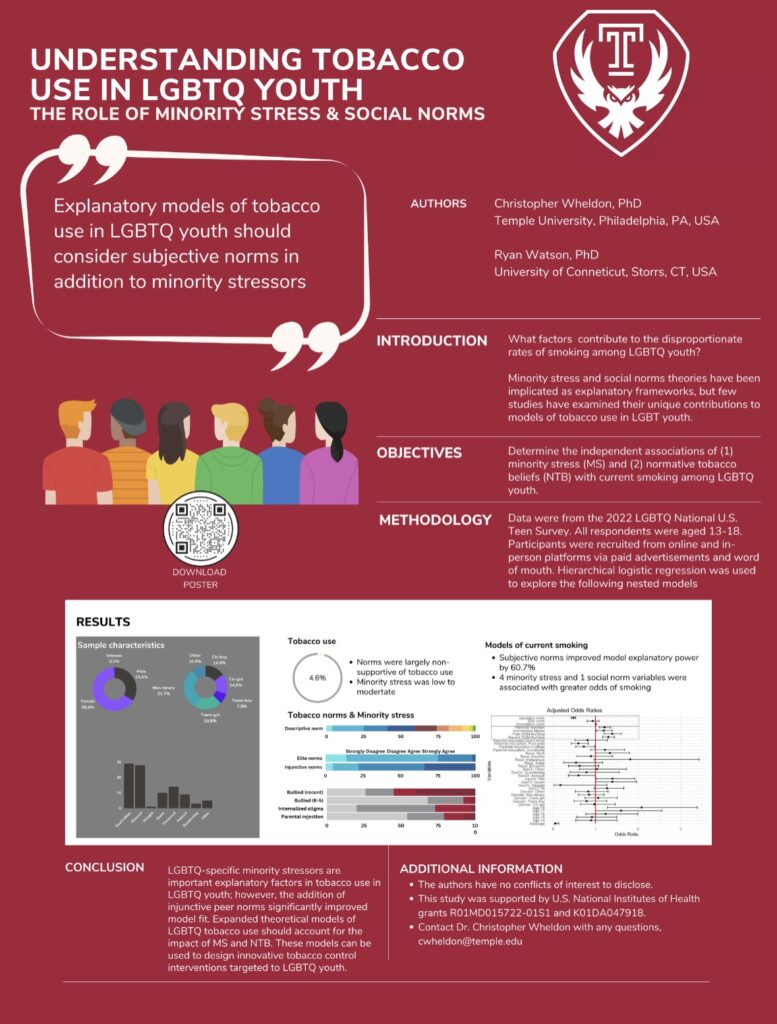Understanding Tobacco Use in LGBTQ Youth: The Role of Minority Stress and Social Norms
Background: There is a need to better understand the factors that contribute to the disproportionate rates of smoking among LGBTQ youth. Minority stress and social norms theories have been implicated as explanatory frameworks, but few studies have examined their unique contributions to models of tobacco use in LGBT youth.

Aims: Determine the independent associations of (1) minority stress (MS) and (2) normative tobacco beliefs (NTB) with current smoking among LGBTQ youth.
Methods: Data were from the 2022 LGBTQ National U.S. Teen Survey. All respondents were aged 13-18. Participants were recruited from online and in-person platforms via paid advertisements and word of mouth. Hierarchical logistic regression was used to explore the following nested models: Demographic variables (Model 1: age, sexual/gender identity, race, ethnicity, parental education), MS variables (Model 2: current and past LGBTQ-bullying, internalized stigma, and parental rejection), and NTB variables (Model 3: descriptive, elite, injunctive norms). Model fit was evaluated with McFadden’s pseudo 2 and strength of associations were estimated using adjusted odds ratios (aOR). The analytic sample was 9,381.
Results: Average age was 15.9 (SD=1.5). Most were natal female (66.0%), non-Hispanic (83.4%), and White (73.3%). There was diversity across sexual and gender identities. Overall, 432 (4.8%) reported current smoking. 2 values for models 1, 2, and 3 were as follows: 0.04, 0.09, and 0.14. Thus, Model 3 was the best fitting with a 60.7% improvement over model 2. In model 3, all 4 MS and 1 social norm variables were associated with greater odds of smoking. Exposure to LGBTQ-bullying (Kindergarten through 5-grade) was the strongest MS predictor of smoking (aOR=1.40; 95%CI: 1.21-1.61). Greater injunctive peer norms were inversely related to odds of smoking (aOR=0.47; 95%CI: 0.42-0.53). Sociodemographic correlates of smoking in Model 3 included older age, pansexual identity, and lower parental educational attainment.
Conclusion: LGBTQ-specific minority stressors are important explanatory factors in tobacco use in LGBTQ youth; however, the addition of injunctive peer norms significantly improved model fit. Expanded theoretical models of LGBTQ tobacco use should account for the impact of MS and NTB. These models can be used to design innovative tobacco control interventions targeted to LGBTQ youth.